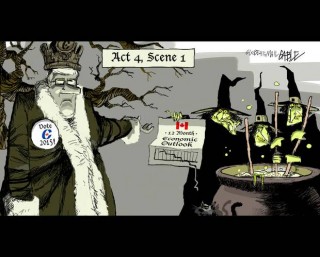Canadians finally saw their pay increase in September.
After months of stalled earnings growth, the average hourly wage rose 2.2 per cent to $26.36 from September of last year. That marked the first time since June, 2016, that wages increased more than 2 per cent, according to Statistics Canada’s labour force survey released on Friday.
“There have been a lot of false dawns for wages this cycle, so I don’t think we can jump to firm conclusions,” said Douglas Porter, chief economist with Bank of Montreal. “However, it does look like the mysterious dive in wages earlier this year is over, and that wage gains are at least getting back to normal.”
For more than a year, wage growth has been tepid even as the jobs market boomed and the unemployment rate sank. Pay increases hovered around 1 per cent over winter and spring, dipping as low as 0.7 per cent in April.
The weakness confounded economists, with some discounting the wage data in the labour force survey because it depends on individuals self reporting their earnings to Statscan instead of the more reliable payroll data.
“It’s sort of been a bit of a mystery as to why it has been so weak,” said Josh Nye, economist with Royal Bank of Canada. “It is moving more toward where we think it should be.”
There has been a gradual increase over the past few months. In the July period, earnings climbed by 1.3 per cent, August by 1.7 per cent and September by 2.2 per cent.
Bank of Nova Scotia called it “soaring” wage growth. “Labour markets continue to tighten and that is shifting pricing power toward workers and away from employers,” Derek Holt, head of the bank’s capital markets economics, said in a note.
For the tenth consecutive month, the economy created jobs. Employers added 10,000 new positions from August to September, with an increase in full-time jobs mitigating a decline in part-time work.
Over the year, Canada has gained 319,700 positions. The unemployment rate remained at 6.2 per cent – the lowest level in nearly a decade and before the dark days of the Great Recession.
The biggest increases were found in the services-producing industries, with wholesale and retail trade up by 99,300 and professional, scientific and technical services up by 78,300 spots.
Among the provinces, Ontario saw the heftiest gains with an additional 35,000 jobs, many of which were in trade and educational services.
There was one jarring development last month. Employment for prime age men, or those between the age of 25 and 54, declined by 29,000 positions. The losses pushed this cohort’s jobless rate up to 5.9 per cent. In contrast, employment for prime age women increased by 12,500 spots and their jobless rate fell to 5.2 per cent.
Although the labour force survey is volatile and has a huge margin of error, the unemployment rate for men has remained higher than for women since the 2008-09 slowdown.
Men shouldered the brunt of the job losses from the global financial crisis and oil price crash, as male-dominated manufacturing and natural resources industries shrank. As well, they have a higher participation rate, said Mr. Porter.
Nevertheless, it was one month of weakness. Over the year, employment for prime age men has increased by 1.2 per cent.
Several economists said the accelerating wage growth could strengthen the case for another interest rate hike this year. The Bank of Canada has already raised the benchmark rate twice this year amid signs of a robust economy.
“Wages are moving in the right direction,” Mr. Nye said. “It raises the odds that they do raise rates again before the end of the year,” he said.
RACHELLE YOUNGLAI
The Globe and Mail, October 6, 2017

